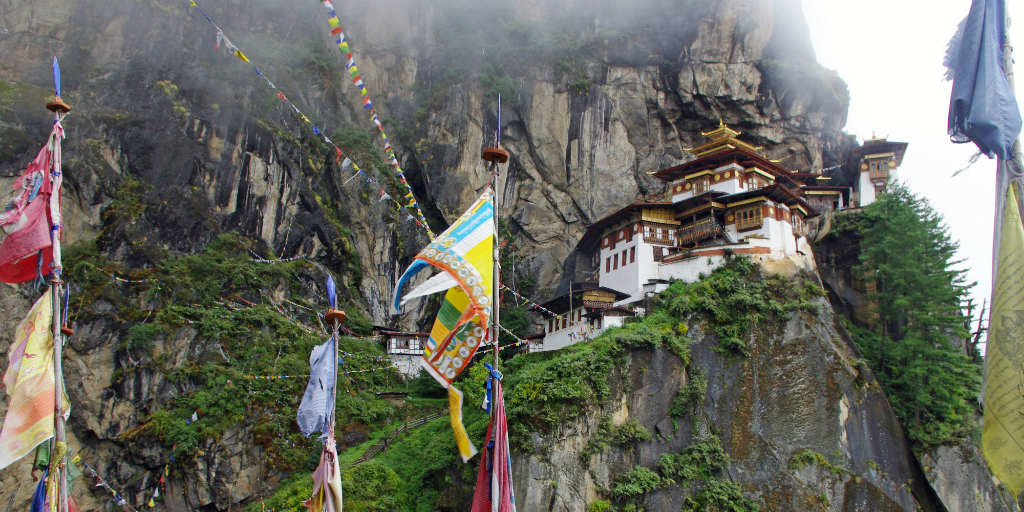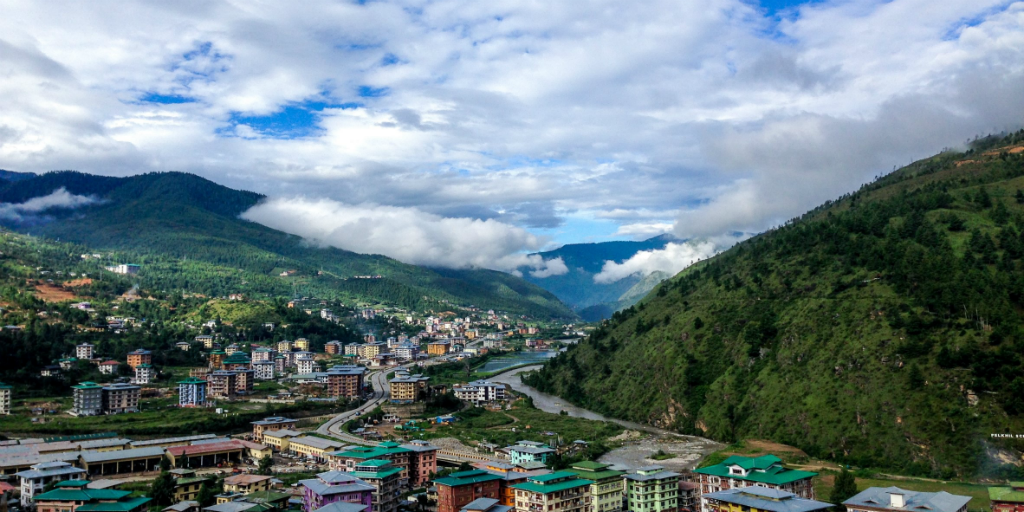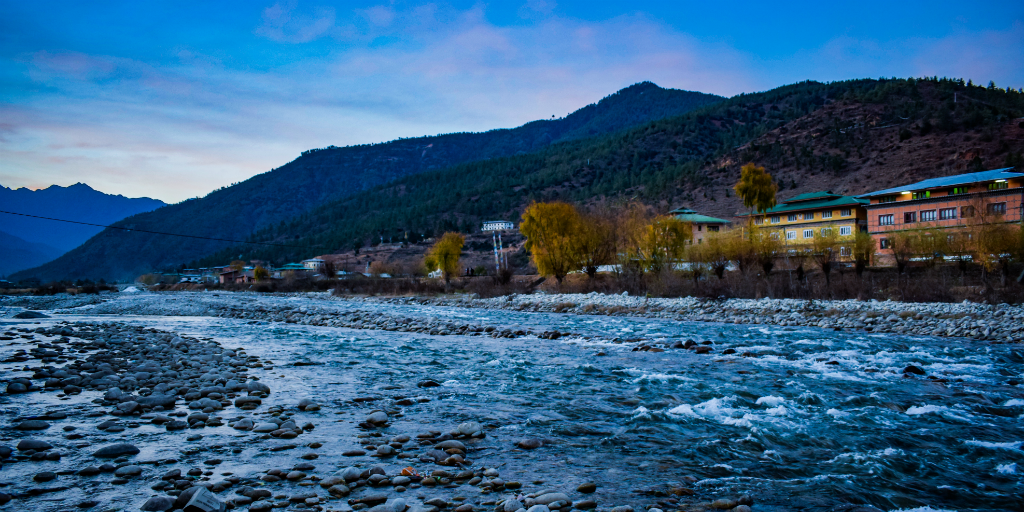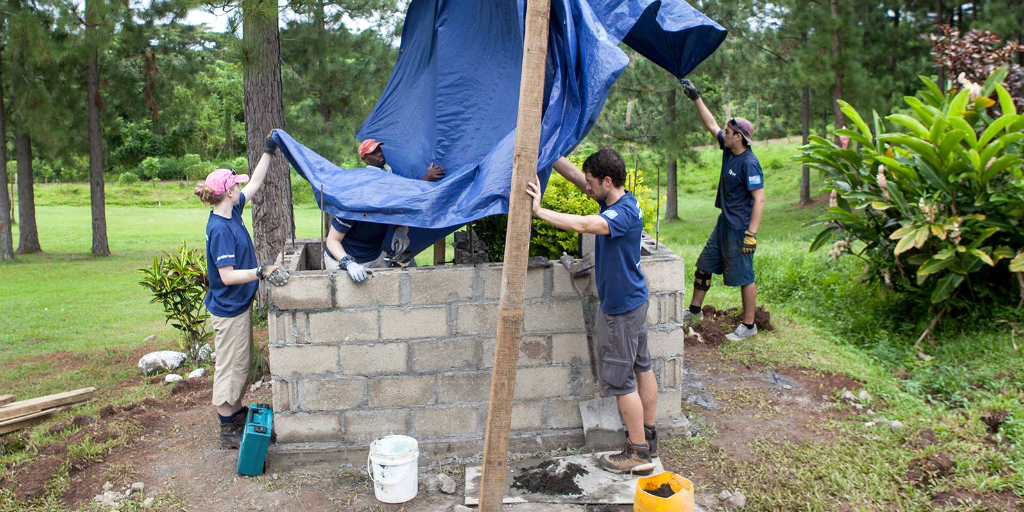Discover Tanzania's top destinations and adventures. From the Great Migration in the Serengeti to summiting Mount Kilimanjaro, and relaxing on Zanzibar's pristine beaches.
GVI
Posted: July 30, 2025

Posted: June 9, 2022
Fog-enshrouded temples nestled in mountainous terrains give you a glimpse of what makes Bhutan a top-travel destination. But this country has an added bonus, it’s one of only two carbon-negative countries in the world.
Despite its appeal, not many people travel to Bhutan. This is because the government of Bhutan has put steps in place to prevent large amounts of tourists from entering the country at any given time.
And this is just one of the ways that Bhutan is making a commitment to conserving its environment. In fact, this country has emerged as a dark horse in both political and environmental progression.
The government of Bhutan has a history of basing political decisions on a Gross National Happiness (GNH) index, before economic growth. It recognises the importance of economic growth, but asserts that it must not undermine the nation’s distinct culture or pristine environment.

Carbon dioxide is the leading greenhouse gas emission produced by human activities – like farming, forestry and the burning of fossil fuels. High levels of carbon dioxide increase the amount of heat that is trapped in the atmosphere, this is one of the causes of climate change.
Most countries produce far more carbon dioxide than the world’s oceans and plant life are able to absorb. These countries are contributing to the effects of climate change in a big way.
But the Kingdom of Bhutan stands out from the crowd. More than 70% of the country is covered in trees. This large amount of tree cover has seen Bhutan becoming a carbon sink – meaning that it absorbs more carbon dioxide than it produces. Bhutan absorbs roughly seven million tonnes of carbon dioxide annually and only produces around two million tonnes.
Bhutan also exports most of the renewable hydro-electric power that it generates from its rivers. This counteracts the country’s contribution towards carbon emissions by millions of tonnes each year.

The environment will always be key to our own well-being. Because Bhutan’s political agenda is based on their GNH index model, environmental protection quickly became a top priority.
It started back in 2009 during the 15th United Nations Climate Change Conference of the Parties (UN COP 15) in Copenhagen. Here COP’s member states made a promise to remain carbon neutral for all time. At COP 21 in 2016, Bhutan re-iterated that promise.
Here are some of the ways Bhutan became carbon negative:
Bhutan’s unwavering focus on reducing its negative impact on the environment and the promotion of environmentally friendly practices has had positive results in the country itself, as well as worldwide.
It is important to note that Bhutan is a small, non-industrialised nation and their environmental method would see challenges on a larger scale, such as in bigger industrialised countries like Australia. However, Bhutan’s achievement does demonstrate what can be achieved when environmental sustainability is at the forefront of the political agenda.
By 2030 Bhutan plans to reach zero net greenhouse gas emissions and to produce zero waste. This means putting a comprehensive plan of action into place, with items such as increasing its reliance on renewable energy sources – like wind, biogas and solar power.

Other creative environmental initiatives in Bhutan include a partnership with Nissan to provide the country with electrical cars. Bhutan hopes to eventually replace all vehicles that rely on fossil fuels with those that run on electricity. The government has also started providing rural farmers with free electricity in order to lessen their dependence on wood stoves for cooking.
And they didn’t stop there. Even more trees have been planted. In June 2015, volunteers set a world record in Bhutan by planting 49,672 trees in just one hour.
In addition to this, every year the government of Bhutan sets aside resources that are used to conserve parks. These resources support activities that prevent hunting and poaching and assist communities who live in parks to manage natural resources efficiently.
In a 2016 Ted Talk titled, “This country isn’t just carbon neutral – it’s carbon negative”, Tshering Tobgay – the former prime minister of Bhutan – highlighted the country’s innovative strategies.
His talk ended with the message: “I invite you to help me, to carry this dream beyond our borders to all those who care about our planet’s future. After all, we’re here to dream together, to work together, to fight climate change together, to protect our planet together. Because the reality is we are in it together.”
Bhutan has made possible what no other country has been able to achieve. This carbon-negative country has shown us how we can address climate change with compassion, commitment and creativity and come out on top.

Take a look at GVI’s online courses that can get you up to date on global environmental issues. Then, get ready to contribute towards environmental conservation in the field by volunteering abroad!
We understand that you may have questions about how COVID-19 will affect your travel plans. Visit our FAQs page which explains our latest safety protocols in response to COVID-19.
Disclaimer: The images in this article were taken pre-COVID-19.
Discover Tanzania's top destinations and adventures. From the Great Migration in the Serengeti to summiting Mount Kilimanjaro, and relaxing on Zanzibar's pristine beaches.
GVI
Posted: July 30, 2025